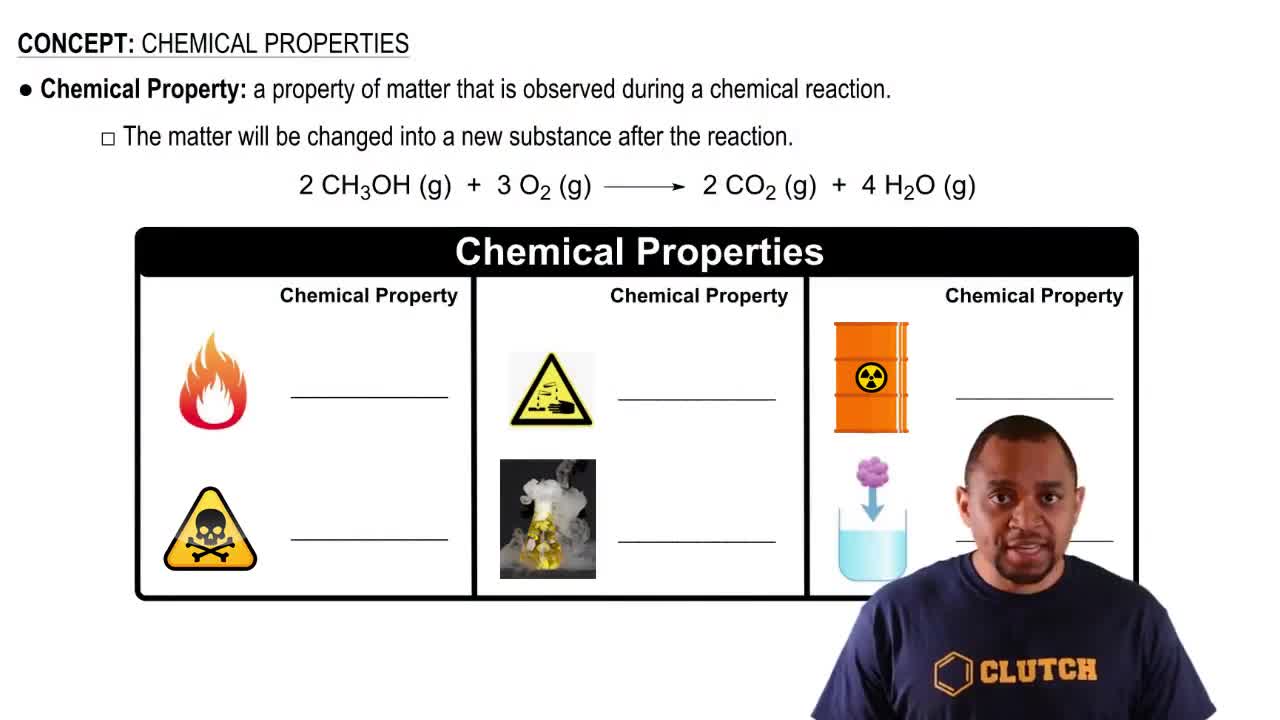Here are the essential concepts you must grasp in order to answer the question correctly.
Intermolecular Forces
Intermolecular forces are the attractive forces between molecules that influence physical properties such as boiling and melting points. In the case of the PrOH•MMA adduct, hydrogen bonding is a significant intermolecular force due to the presence of the hydroxyl group in propanol, which can interact with the carbonyl group in methyl methacrylate.
Recommended video:
Intermolecular vs Intramolecular Forces
Equilibrium Constant (Kc)
The equilibrium constant (Kc) quantifies the ratio of the concentrations of products to reactants at equilibrium for a reversible reaction. A Kc value of 0.701 indicates that at equilibrium, the concentration of the adduct PrOH•MMA is less than that of the unassociated reactants, suggesting that the association is not highly favored under the given conditions.
Recommended video:
Equilibrium Constant Expressions
Chemical Structure Representation
Chemical structure representation involves drawing the molecular structure of compounds to illustrate their connectivity and functional groups. For the PrOH•MMA adduct, it is essential to depict the hydrogen bond between the hydroxyl group of propanol and the carbonyl group of methyl methacrylate, using a dotted line to signify the intermolecular interaction.
Recommended video:
 Verified step by step guidance
Verified step by step guidance


